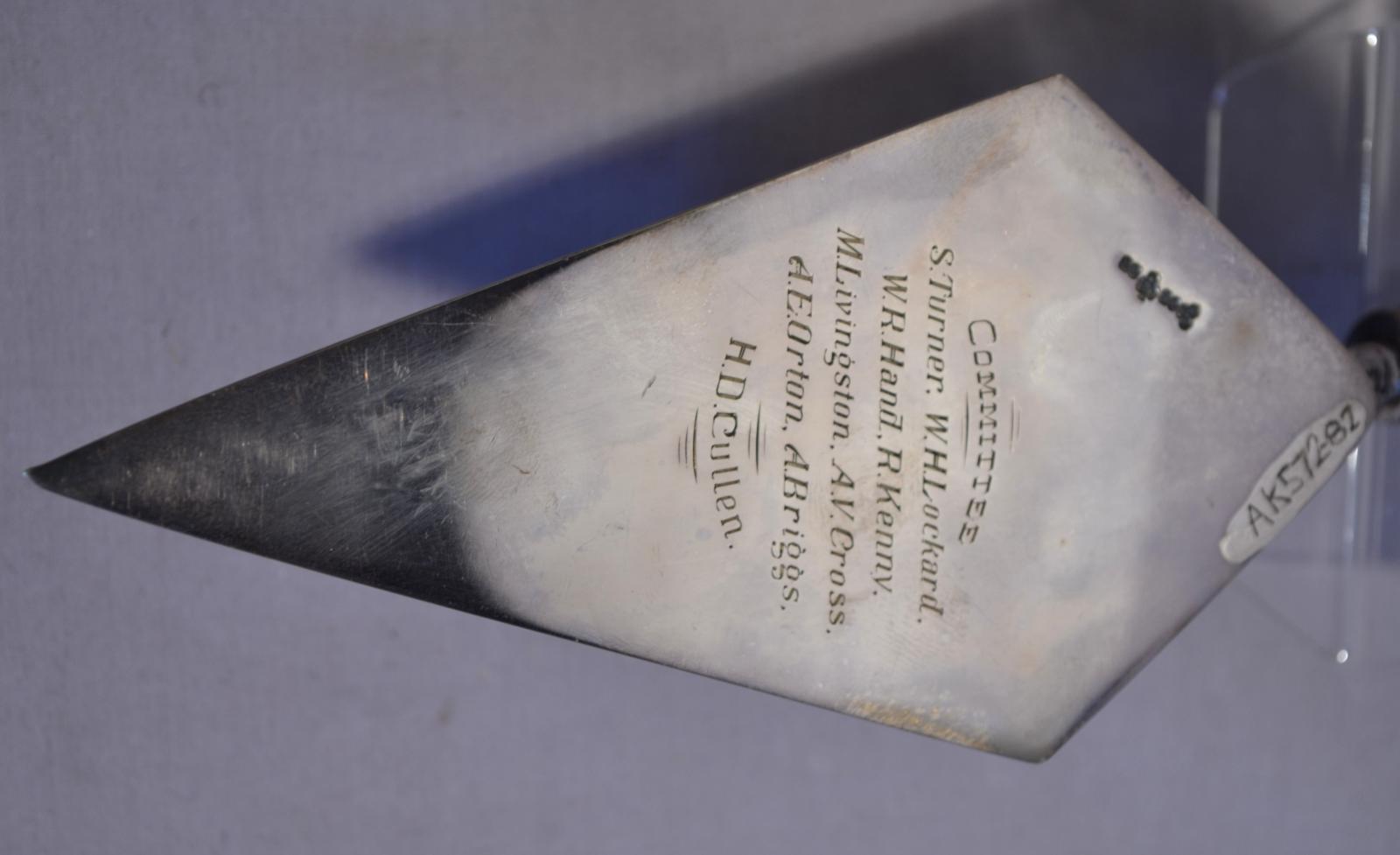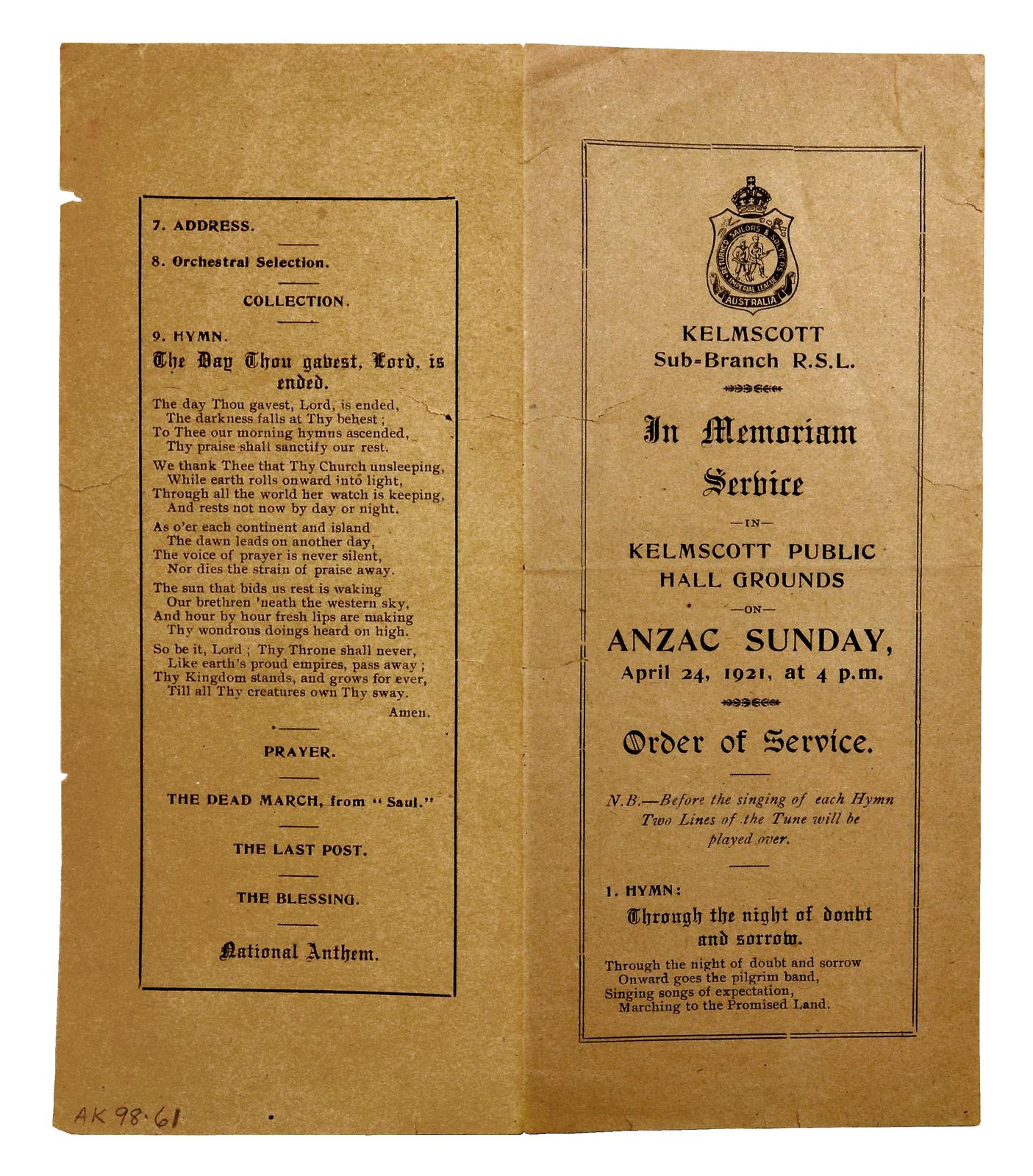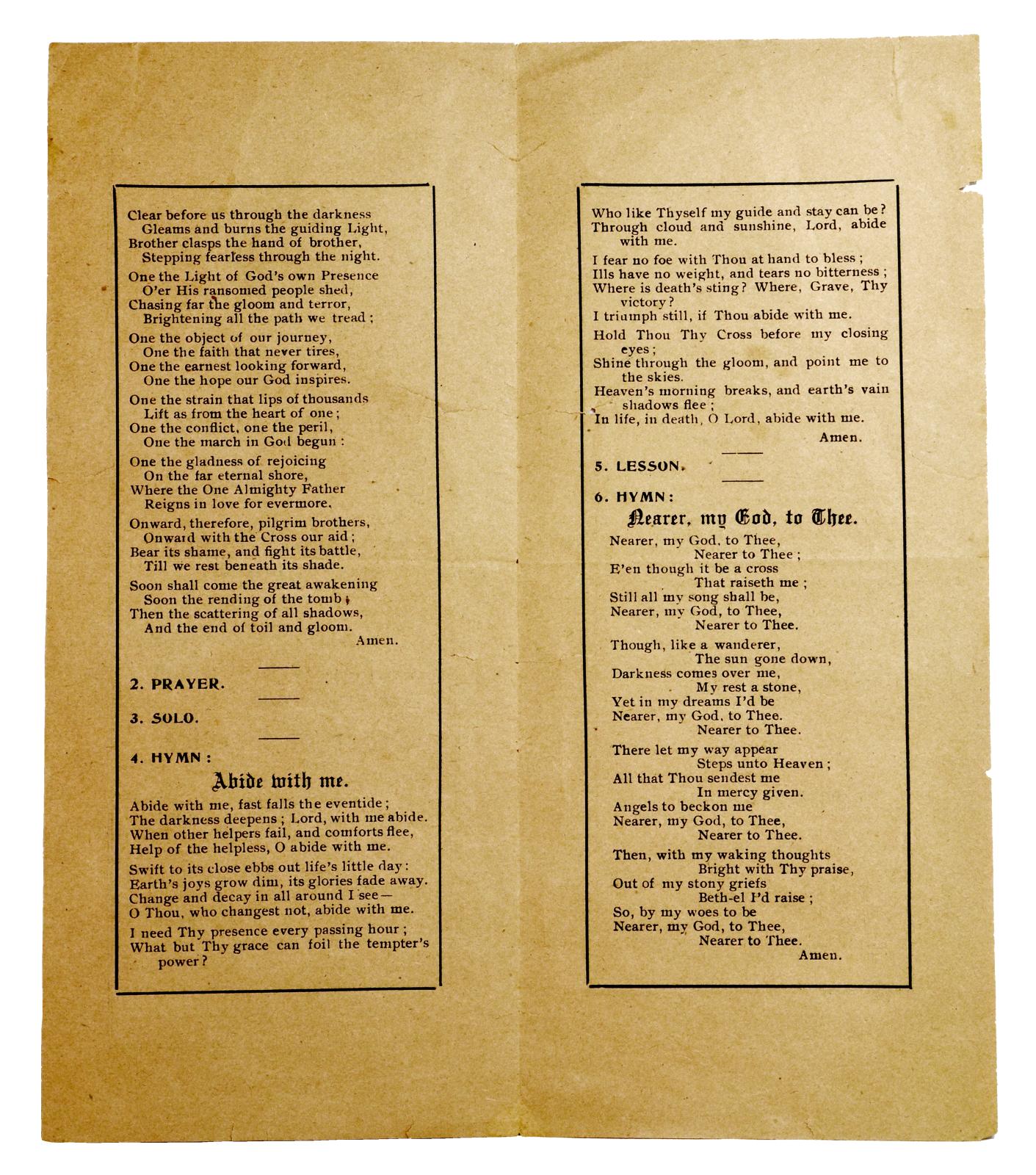How the City of Armadale has remembered those who have served.
City of Armadale - History House
The Armadale Obelisk Memorial
In 1916 Armadale residents formed a ‘Roll of Honour’ committee with the aim of constructing an obelisk at the intersection of Fourth Road and Eleventh Avenue.
The design for the Obelisk was drawn up by Perth architect and town planner Harold Boas. The memorial would represent the soldiers and nurses from Armadale, West Armadale, Beenup (Byford), Wungong and Bedfordale. Kelmscott, Roleystone and Karragullen planned to construct their own memorial.
Marian Cullen, wife of the Armadale Honour Roll Committee secretary, was given the honour of laying the first brick. Bricks were also laid by a student from each of the five local schools. The memorial was built using locally made bricks on a granite base with white marble tablets. On 16 December 1916, the Governor, Sir Harry Barron unveiled the obelisk.
In 1959 the obelisk was moved to Fallen Soldiers Memorial Park out of fear of it being damaged by traffic using the intersection where it was located. Two new marble panels were added during its relocation. The first listed the names of the 21 men who had lost their lives in World War II. The second was for Private Gerald Russel, who was killed in 1953 while serving in the Korean War.
In the 1990s the Obelisk received a facelift with the original marble panels removed and replaced with new black stone panels. In 2018 following an extensive research project these panels were replaced with new white marble panels featuring a far more comprehensive list of the local men and women who had enlisted in World War I.
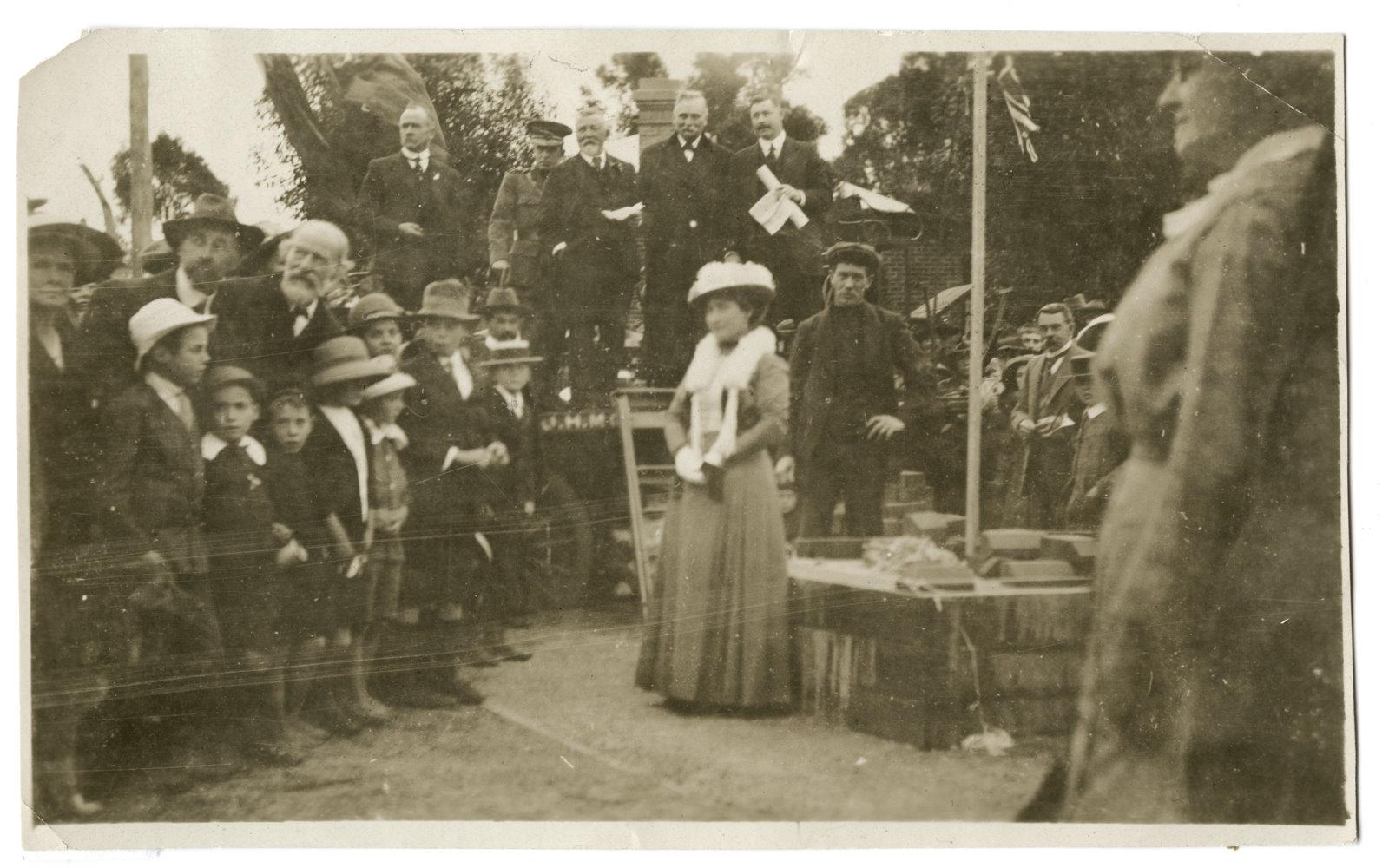
Mrs Marian Cullen attending the laying of the foundation bricks for the Armadale Obelisk, 12 August 1916.
Marian Cullen holding the trowel used to lay the foundation brick with (left to right) Anham Briggs (Armadale Honour Roll Committee), Colonel Richard Courtney (Camp Commandant for Western Australia), Samuel Turner (Armadale Honour Roll Committee Chair), William George M.L.A (Minister for Works), and William Nairn M.L.A (local member), standing on the dais.
PH476, Birtwistle Local Studies Library
Framed portraits of the Armadale Honour Roll Committee, 1918.
These framed photographs were presented to Herbert Dale Cullen who as the committee secretary.
COA2008.49, donated by the City of Armadale
‘Lest We Forget’ marble panel from the Armadale Obelisk Memorial, 16 December 1916.
In the early 1990s the memorial underwent a refurbishment and installation of new black stone panels. The original marble tablets were thrown into a skip bin. Luckily a member of the Armadale Kelmscott Historical Society was passing and salvaged them for History House Museum.
COA2016 – 55a, acquired by the Armadale Kelmscott Historical Society
Ceremonial Trowel used by Mrs Marian Cullen to lay the Armadale Honour Roll foundation brick, 12 August 1916.
The trowel was presented to Marian Cullen by members of the Armadale Honour Roll Committee including Samuel Turner, William ‘Bill’ Henry Lockard, Walter Rowland Hand, R. Kenny, M. Livingstone, Archibald Vidgen Cross, A.E. Orton, Anham Briggs and her husband Herbert Dale Cullen.
AK1982.572, Donated by the City of Armadale
The Kelmscott Obelisk Memorial
Due to restrictions placed on constructing large memorials by the War Council during World War I, Kelmscott, Roleystone and Karragullen had to wait until 1921 to construct their memorial.
The memorials foundation stone was laid on 21 May by Major-General Talbott Hobbs. It took about a month to install the granite obelisk and stone panels. On 29 May the Western Australian Governor, Sir Francis Newdegate, K.C.M.G, unveiled the memorial to the public. Colonel Herbert Brayley Collett C.M.G, D.S.O, V.D. delivered an address to the crowd thanking the service and sacrifice of the local men and women who enlisted and the importance of passing on tales of their deeds to future generations.
Since its unveiling the names of those who died in service during World War II were added along with commemorative plaques remembering those who served in the Korean War, Indonesian Confrontation, Malayan Emergency and Vietnam War.
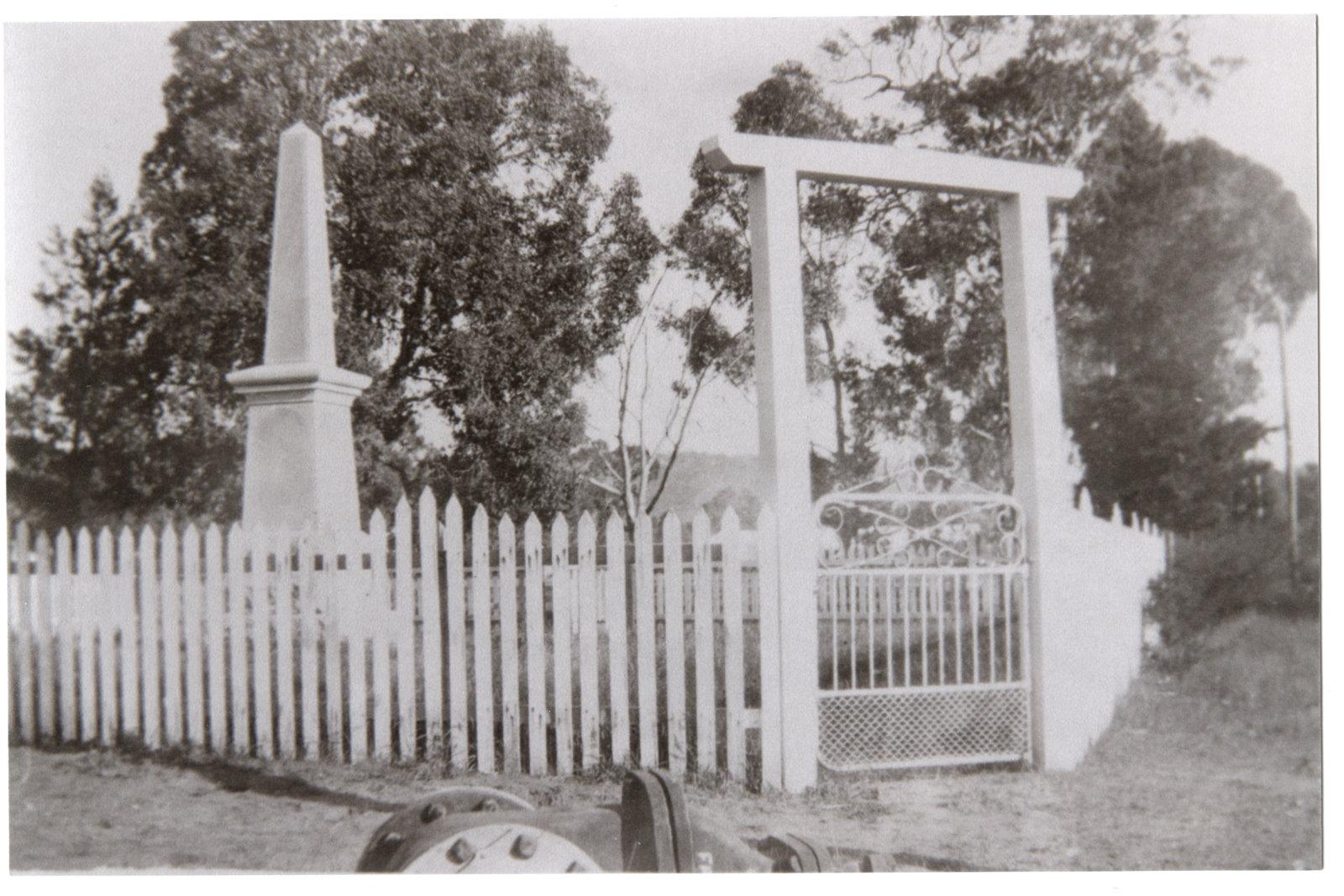
Kelmscott Obelisk Memorial, 1925.
PH439, Birtwistle Local Studies Library

ANZAC Day service at the Kelmscott War Memorial, 25 April 1973.
ANZAC veterans standing and observing the laying of a wreath, left to right, William ‘Bill’ Hart, C.M. Griffiths, Ivor Trehane Birtwistle, Mervyn James Rose and Edgar Cyril Rushton M.L.A.
PH619, Birtwistle Local Studies Library
Kelmscott ANZAC Memorial Service Program, 24 April 1921.
The Kelmscott ANZAC service was held at the Kelmscott Hall on River Road. It would be another month before the Kelmscott memorial would be finished. The second Armadale ANZAC Day Service was held at the Fallen Soldiers Memorial Park the following day.
AK1998.61, donated by Naomi Gates
Fallen Soldiers Memorial Park
At the end of World War I the community explored what else they could do to honour those who had died during the war. In 1919 money was raised and 1.2 hectares of land at the corner of Jull Street and Orchard Avenue was acquired to create the Fallen Soldiers Memorial Park. The park was opened on ANZAC Day 1920, the same time as the districts first recorded ANZAC Day service.
The following year 28 trees were planted for the 28 men known to have been killed during the war, and the Armadale Football Club installed a flag pole with the names of its members who enlisted and did not return. In June 1921 the Armadale Kelmscott Road Board was presented with a 77mm German field gun as a war trophy which they installed in the park.
Since then, Fallen Soldiers Memorial Park has been an important part of the local community. It has hosted many ANZAC and Remembrance Day services as well as been a place for the local community to relax and enjoy.

Members of the Armadale Memorial Park Committee posing with the new war trophy in Memorial Park, 1921.
The field gun was captured by Australian soldiers along the Hindenburg line in September 1918. The gun was displayed in the park until World War II, when in March 1942 the Armadale Kelmscott Road Board was informed that Western Command would be removing the gun with the promise a new field gun would be given to them at the end of World War II. In 2015 the original 77mm field gun was replaced with a 105mm M2A2 Howitzer, which had been used by Australian Forces in the Vietnam War and retired from service in 2012.
FPH73, Birtwistle Local Studies Library
Want to discover more?
To discover more about what Western Australian’s thought about World War I, check out the cartoons of Ben Strange at Strange’s War: The World War One Cartoons of Ben Strange.’
The Birtwistle Wiki, titled Our Contribution, is the ideal place to learn about locals who served in the World Wars. Each of the soldiers, nurses, sailors, pilots (and more) has their own page; some of which are filled with vital facts and detailed stories, along with other pages in need of fresh information and photographs to help expand them. Visit www.birtwistlewiki.com.au to read more. If you are able to help with expanding a wiki entry, contact details are available.

ANZAC Day ceremony in Armadale, 25 April 1927.
Local school children attending the ANZAC Day ceremony when located at Fourth Road and Eleventh Avenue.
PH287, Birtwistle Local Studies Library
